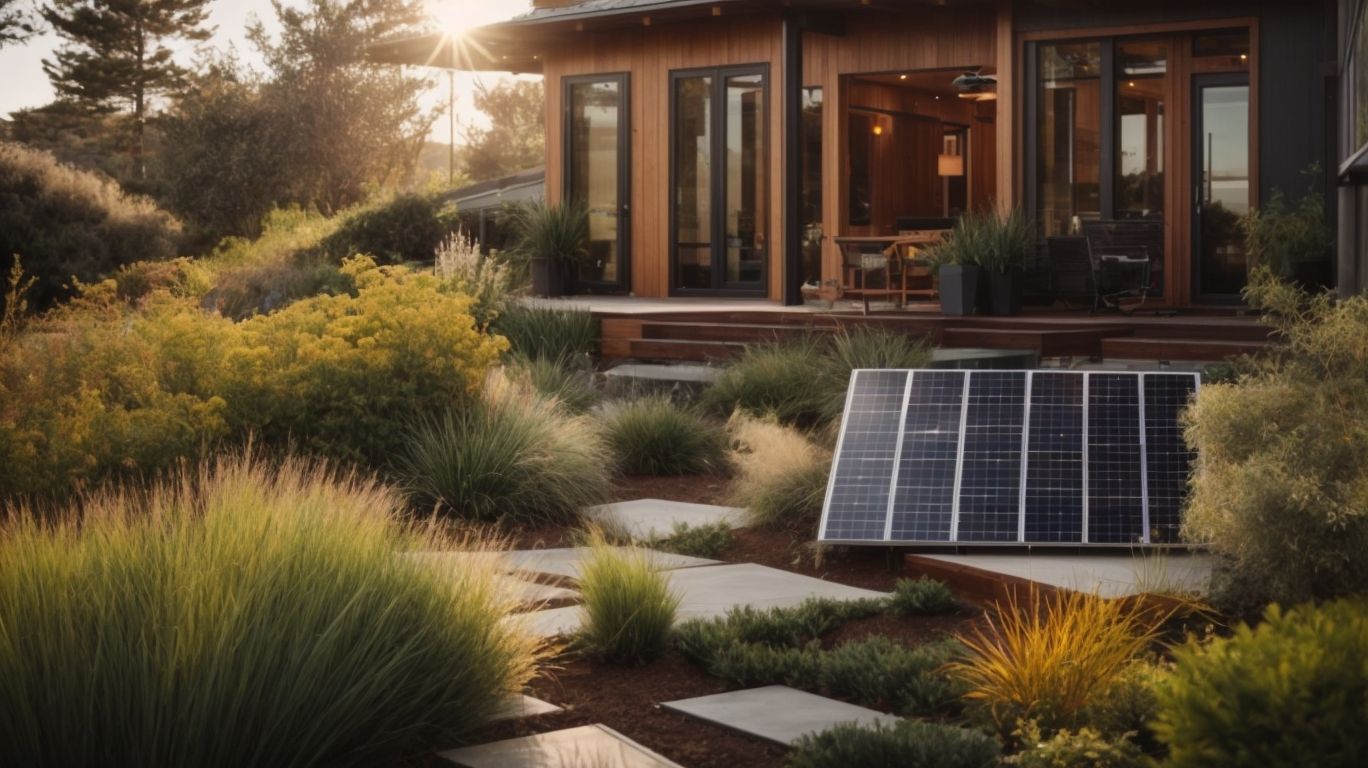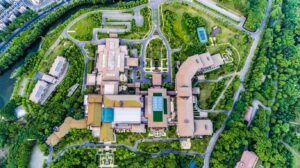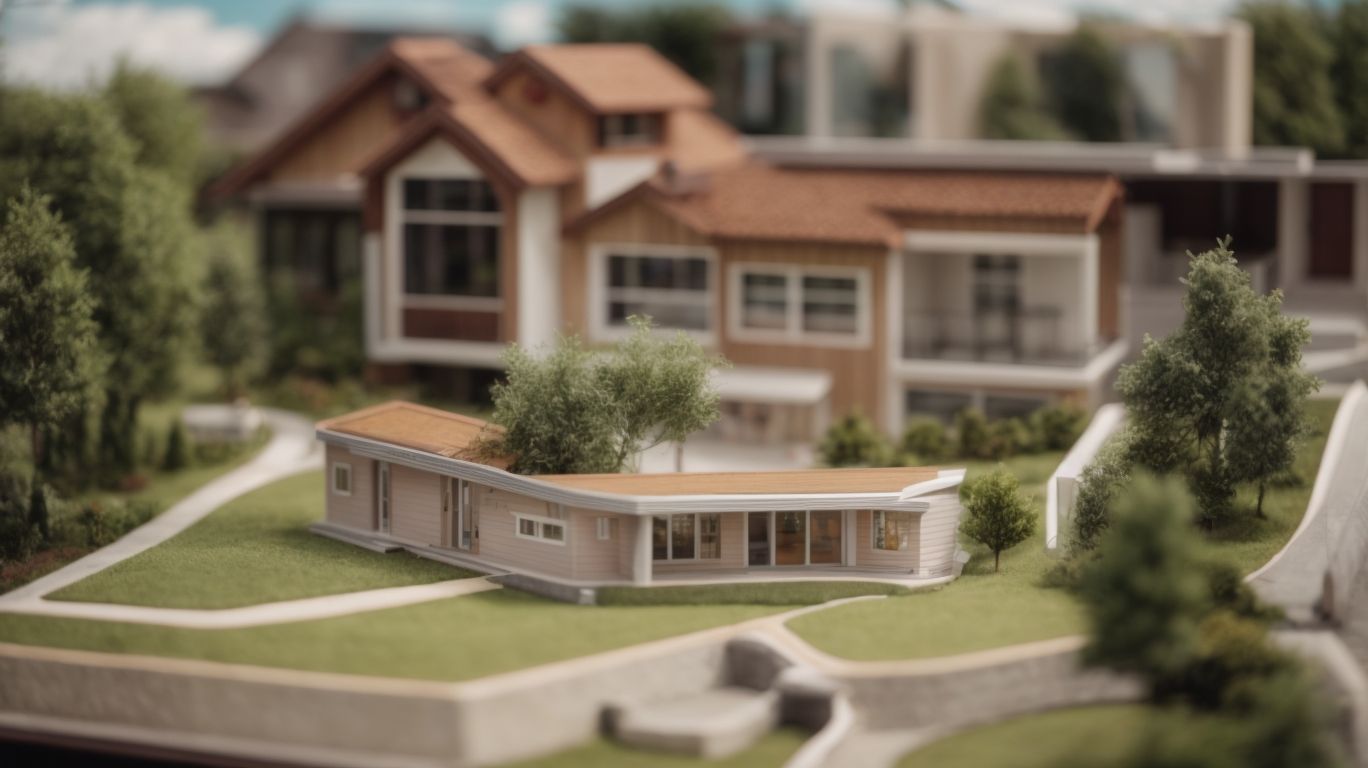
Leveraging Green Design: How Bay Area Homes Are Turning Eco-Friendly
Are you curious about how Bay Area homes are embracing eco-friendly practices through green design?
We explore the principles of green design, its importance, and the environmental and economic benefits it offers. We discuss how Bay Area homes are incorporating green design elements such as solar panels, rainwater harvesting systems, and energy-efficient appliances.
We address the challenges of implementing green design in homes and provide tips for homeowners to overcome them. Join us as we delve into the future of green design in Bay Area homes.
What Is Green Design?
Green design encompasses sustainable and environmentally friendly practices that aim to reduce the carbon footprint and promote eco-conscious living.
It involves integrating renewable resources, maximizing energy efficiency, and reducing waste throughout the design and construction process. The core principles of green design revolve around creating healthy, efficient, and sustainable spaces that prioritize the well-being of both people and the planet.
By utilizing materials with low environmental impact, implementing passive solar design strategies, and incorporating green technologies like solar panels and rainwater harvesting systems, green design not only minimizes negative environmental impacts but also enhances the overall quality of life for occupants.
Embracing green design principles is essential for mitigating climate change, conserving natural resources, and building a more resilient and sustainable future.
What Are The Principles Of Green Design?
The principles of green design revolve around sustainability, emphasizing the use of renewable energy sources, promoting energy efficiency, implementing recycling and waste reduction practices, and prioritizing water conservation.
These fundamental principles are essential in fostering environmentally conscious strategies that aim to reduce the environmental impact of construction and design. By incorporating green initiatives into architectural projects, designers and builders can create spaces that not only benefit the present but also support a sustainable future.
Energy-efficient designs not only lower operational costs but also reduce greenhouse gas emissions, contributing to a healthier environment. Waste management practices, such as recycling and upcycling materials, help minimize landfill waste and promote the concept of a circular economy. Water conservation plays a critical role in green design, with strategies like rainwater harvesting and efficient irrigation systems helping to preserve this valuable resource.
Why Is Green Design Important?
Green design holds significant importance due to its positive impact on the environment, fostering sustainable development, reducing carbon footprint, and promoting the adoption of energy-efficient appliances and green building practices.
By integrating green landscaping techniques, such as native plantings and water conservation methods, into architectural plans, sustainable design not only enhances the aesthetics but also minimizes environmental damage. Embracing eco-conscious practices like using recycled materials, incorporating passive solar design, and optimizing natural lighting can further reduce energy consumption. The integration of green design principles not only benefits the planet but also creates healthier and more eco-friendly living and working spaces for individuals.
What Are The Environmental Benefits Of Green Design?
The environmental benefits of green design extend to eco-conscious homeowners and communities, through energy conservation, recycling initiatives, water conservation practices, and the utilization of sustainable materials.
Green design not only helps in reducing the carbon footprint of a household but also creates a healthier indoor environment by minimizing the use of toxic chemicals.
By incorporating energy-efficient appliances and systems, homes designed with green principles can significantly lower utility bills, making it a cost-effective choice in the long run.
In addition, the emphasis on sustainable materials in construction fosters a more responsible approach towards resources, thereby contributing to the overall well-being of the planet.
What Are The Economic Benefits Of Green Design?
In addition to environmental advantages, green design offers economic benefits by providing energy-saving solutions, supporting a sustainable lifestyle, facilitating eco-friendly improvements, and integrating innovative green technologies.
By implementing green design principles, individuals and businesses can reduce their operational costs through lower energy consumption and increased efficiency. The incorporation of sustainable materials and practices not only contributes to a healthier environment but can also lead to long-term financial savings.
The promotion of eco-friendly enhancements in buildings and infrastructure encourages a shift towards more responsible and resource-efficient living. The use of cutting-edge green technologies not only aligns with sustainability goals but can also enhance property value and attractiveness to environmentally-conscious consumers.
How Are Bay Area Homes Incorporating Green Design?
Bay Area homes are embracing green design through the integration of eco-friendly features such as solar panels, rainwater harvesting systems, energy-efficient appliances, the use of natural and sustainable materials, and the implementation of green landscaping.
These eco-conscious homeowners are increasingly turning to solar panels to harness the power of the sun and reduce their reliance on traditional energy sources.
By installing rainwater harvesting systems, they are able to collect and use rainwater for various purposes, promoting water conservation.
Energy-efficient appliances are being chosen to minimize electricity consumption, while the use of sustainable materials like bamboo flooring and recycled glass countertops further enhances the eco-friendly aspect of these homes.
Green landscaping practices such as native plant gardens and permeable pavers are also being incorporated to promote biodiversity and reduce water runoff.
Solar Panels
Solar panels play a crucial role in enhancing the energy efficiency of Bay Area homes, harnessing renewable energy sources and integrating cutting-edge green technology to reduce reliance on traditional power grids.
By utilizing solar panels, homeowners in the Bay Area can significantly reduce their carbon footprint and contribute to a more sustainable environment. The installation of solar panels enables households to generate their electricity, leading to lower utility bills and long-term cost savings. The excess energy produced can be fed back into the grid, further promoting the use of clean, renewable sources. This shift towards solar power not only benefits individual homeowners but also contributes to the broader goal of transitioning to a greener and more eco-friendly energy system in the Bay Area.
Rainwater Harvesting Systems
Rainwater harvesting systems in Bay Area homes exemplify eco-friendly design by promoting water conservation, aligning with green building practices, and reducing the dependency on municipal water sources through sustainable water management.
This innovative approach not only helps in reducing water wastage but also contributes to the overall sustainability of residential properties. By capturing and storing rainwater for later use in irrigation, landscaping, and even indoor non-potable water applications, these systems play a crucial role in minimizing the environmental impact of traditional water sources. Rainwater harvesting systems can also lead to cost savings for homeowners by reducing their reliance on expensive municipal water services, making them a practical and environmentally-conscious choice for sustainable living.
Energy-Efficient Appliances
Bay Area homes prioritize energy-efficient appliances to support green construction practices, enhance energy conservation efforts, and foster an eco-conscious community dedicated to sustainable living.
These appliances, from refrigerators to washing machines, play a crucial role in reducing energy consumption, minimizing carbon footprints, and lowering utility bills. By opting for energy-efficient models, residents in the Bay Area not only contribute to a cleaner environment but also enjoy long-term cost savings.
The widespread adoption of these appliances is a key component of building codes in the region, reflecting the commitment to sustainable practices and green building standards. This collective effort towards energy efficiency underscores the region’s dedication to creating eco-friendly homes and supporting environmentally conscious lifestyles.
Natural and Sustainable Materials
Bay Area homes feature the integration of natural and sustainable materials as part of their green initiatives, promoting eco-friendly design practices and prioritizing environmentally friendly construction materials.
These materials not only enhance the aesthetic appeal of homes but also play a crucial role in reducing the carbon footprint associated with construction. By opting for sustainable alternatives such as bamboo flooring, reclaimed wood, and energy-efficient windows, homeowners in the Bay Area are actively contributing to a more sustainable future.
Incorporating features like solar panels and living green roofs further solidifies the commitment to environmentally friendly building practices, showcasing a growing trend towards eco-conscious living in the region.
What Are The Challenges Of Implementing Green Design In Homes?
Despite its numerous benefits, implementing green design in homes poses challenges such as high upfront costs, limited availability of resources, and resistance to change from traditional construction methods.
Addressing cost barriers remains a major hurdle when attempting to integrate green design into homes. Many sustainable building materials and technologies come at a premium price, making it difficult for homeowners to justify the initial investment. The scarcity of sustainable resources further complicates the process, as sourcing eco-friendly materials can be challenging and sometimes unreliable. There is often a reluctance to adopt eco-friendly practices due to the unfamiliarity and perceived inconvenience, hindering the widespread adoption of green design principles in residential construction projects.
High Upfront Costs
The high upfront costs associated with green design initiatives can act as a barrier to sustainable development and may deter some homeowners within eco-conscious communities.
This financial hurdle often leads to reluctance among individuals to invest in eco-friendly technologies and practices. Despite the long-term benefits of reduced energy consumption and lower utility bills, the immediate investment required can be daunting. This poses a significant challenge for communities striving to embrace sustainability as a core value, as it limits the widespread adoption of green solutions. The upfront costs also underscore the need for innovative financing options and incentives to make sustainable design more accessible to a broader range of homeowners.
Limited Availability of Resources
The limited availability of resources for green design projects can hinder the adoption of sustainable materials and green building practices, impacting the overall sustainability of construction initiatives.
This issue poses significant challenges for the construction industry, as the demand for sustainable and eco-friendly building materials continues to rise. Without adequate access to these resources, construction projects may struggle to meet the growing expectations for environmentally conscious practices. The scarcity of sustainable materials can drive up costs and limit the scalability of green design initiatives, making it harder for companies to embrace sustainable construction practices fully. Finding innovative solutions to source and utilize sustainable materials is crucial to overcoming these hurdles in the pursuit of greener construction methods.
Resistance to Change
Resistance to change poses a significant hurdle in the adoption of green design practices, impeding the transition to eco-friendly construction methods and limiting the positive environmental impact of sustainable initiatives.
The reluctance to shift from traditional building approaches to more sustainable methods hinders progress toward achieving environmental sustainability goals. In green design implementation, overcoming resistance involves addressing misconceptions, encouraging education on the benefits of eco-conscious construction, and fostering a culture that values innovation and sustainability. The fear of increased costs and perceived complexities associated with green technologies can deter stakeholders from embracing green building practices, further complicating the path to a greener future.
How Can Homeowners Overcome These Challenges?
To address the challenges of implementing green design, homeowners can leverage government incentives and rebates, collaborate with green design professionals, and educate themselves on sustainable practices.
- By taking advantage of government incentives and rebates, homeowners can significantly reduce the upfront costs associated with implementing green design features in their homes, making sustainable living more accessible.
- Partnering with experienced green design professionals can provide valuable insights and guidance throughout the design and implementation process, ensuring that the project meets both aesthetic and sustainability goals.
- Self-education on sustainable practices empowers homeowners to make informed decisions and actively contribute to creating a more environmentally friendly living space.
Government Incentives and Rebates
Government incentives and rebates play a vital role in supporting homeowners’ efforts to implement green initiatives, offering financial support for the purchase of energy-efficient appliances and other eco-friendly improvements.
These incentives not only help reduce the upfront costs associated with investing in sustainable technologies but also motivate individuals to make environmentally conscious choices when upgrading their homes. By providing monetary benefits or tax breaks, the government encourages a shift towards more energy-efficient practices, ultimately leading to a decrease in carbon emissions and a more sustainable future. In addition to benefiting the individual homeowner, these incentives also contribute to the overall environmental well-being by promoting the widespread adoption of green technologies across communities.
Collaborating with Green Design Professionals
Collaborating with green design professionals enables homeowners to integrate sustainable practices, adopt a sustainable lifestyle, and incorporate eco-friendly features into their homes with expert guidance.
These experts can provide valuable insights on how to reduce energy consumption through the use of renewable resources such as solar panels or energy-efficient appliances. By working closely with professionals in the field of green design, homeowners can optimize their living spaces to minimize waste production and promote a healthier environment.
Green design experts can offer innovative solutions for water conservation, waste management, and indoor air quality improvement, enhancing the overall sustainability of a home. Through this collaboration, homeowners not only contribute to a greener planet but also create healthier living spaces for themselves and their families.
Educating Themselves on Green Design Practices
Educating themselves on green design practices empowers homeowners to implement green building practices, explore energy-saving solutions, and embrace innovative green technologies for sustainable improvements.
By gaining knowledge about green design practices, homeowners can make informed decisions that lead to more sustainable homes. This education equips them with the understanding of how to reduce their environmental footprint, increase energy efficiency, and create healthier living spaces. With this awareness, homeowners can actively contribute to a greener future by incorporating eco-friendly building materials, renewable energy sources, and smart home technologies. Embracing green design practices not only benefits the environment but also enhances the overall quality and value of their homes.
What Is The Future Of Green Design In Bay Area Homes?
The future of green design in Bay Area homes holds promise for sustainable development, driven by ongoing green initiatives, the integration of eco-friendly improvements, and the advancement of green technology.
As the world increasingly gravitates towards sustainable living, the Bay Area stands at the forefront of environmentally conscious housing trends. From solar panels to rainwater harvesting systems, green building practices are becoming more prevalent in residential construction. Homeowners are actively seeking ways to reduce their carbon footprint and lower utility bills through energy-efficient upgrades.
With an emphasis on creating healthy indoor environments through natural ventilation and non-toxic materials, the evolution of green design in Bay Area homes showcases a shift towards holistic living spaces that prioritize both environmental and human well-being.




No Comments